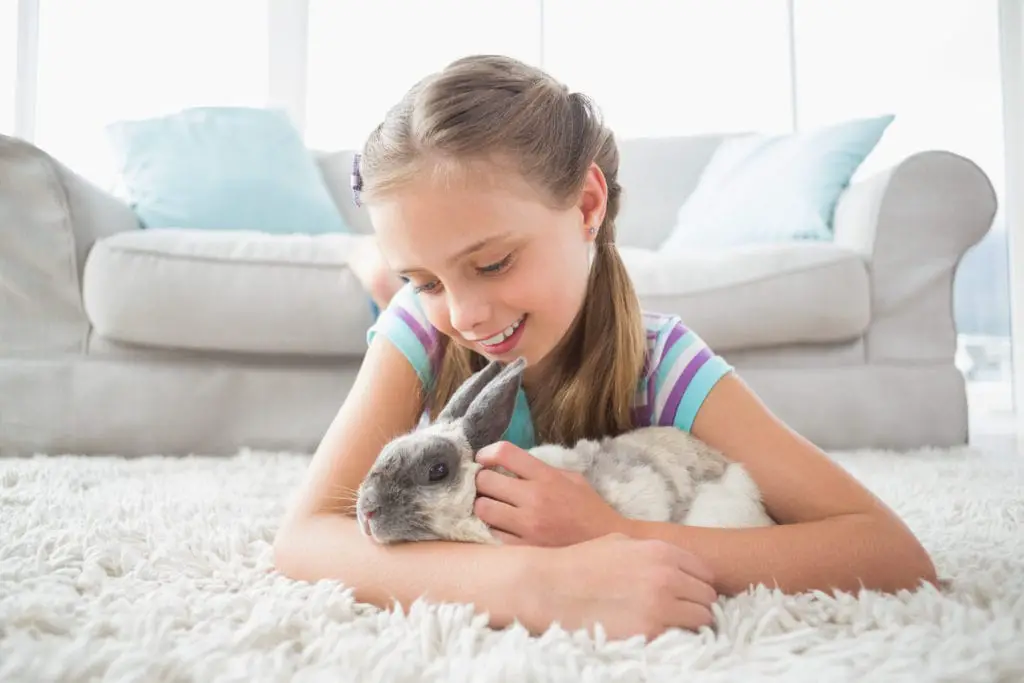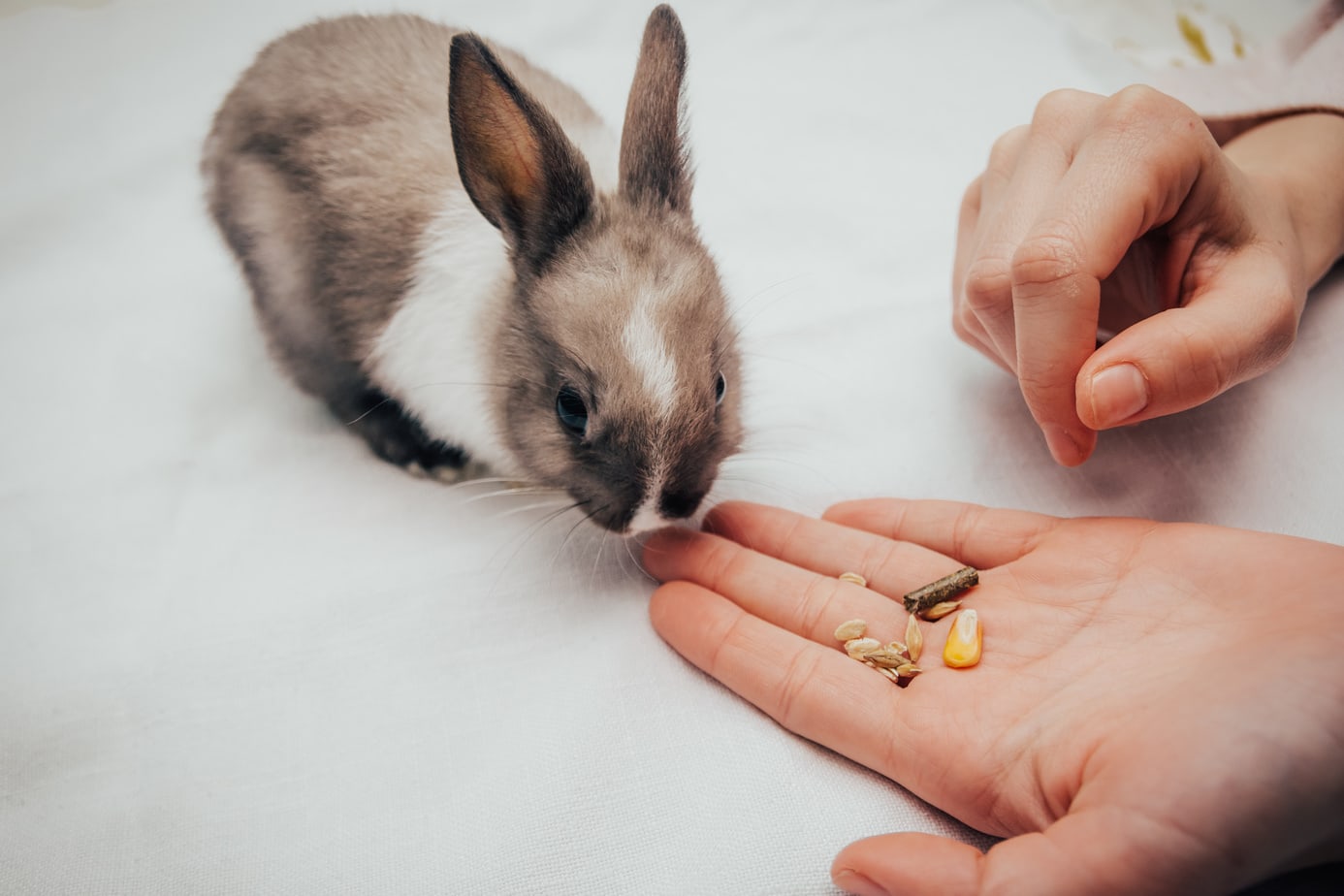
When adding a rabbit into your life, it is natural for you to want to keep it in a place that is convenient for you and your rabbit alike. You should carefully consider where to keep your rabbit’s cage, and while any room in any house can be made suitable, not all spaces are advisable.
Your rabbit can certainly live in the garage, but it is not ideal. A typical garage would need to be extensively rabbit-proofed, and even though it’s inside and safe from weather and predators, other threats make it unlikely for your rabbit to be happiest and healthiest.
Let’s start with this: there are a lot of precarious features in a garage that can make it a dangerous place to let your bunny live.
In order to properly house a rabbit, you must allow them space to run, play, socialize, eat, drink, and sleep. If your garage were used for your rabbit exclusively, there are fewer things to be concerned about.
But if you hope to keep your garage as a functional, multi-purpose room, consider keeping your rabbit in a different room.
The Basics
Just like any animal, humans included, rabbits need food, shelter, and friends.
These are the three things that are best to prioritize when choosing a spot for your rabbit to live.
Each rabbit is different, and the houses they live in are different, too. In everything, it is up to you to determine what is best for your rabbit and your family.
Here are some pros and cons to housing a rabbit in your garage:
Pros
This list is very much based on technicalities and the specificities of your household, but they are worth considering!
- It’s inside
- This is hands down the best way to keep your rabbit safe from predators
- It’s shelter
- In the wild, rabbits use their burrows to keep warm. In your home, your rabbit will use your walls to keep them safe from the cold
- Temperature
- It’s likely that your garage’s temperature is regulated with a thermostat. This is good news for your rabbit because you can keep them in a comfortable temperature.
- Keeping your rabbit in the house keeps it socialized
- When you and your family members frequent the space where your rabbit lives, the interaction will benefit them.
Cons
Let’s note that this is not the worst place to house a rabbit, but it is difficult for your rabbit to be happiest here.
- It’s loud
- Garage doors, cars, air conditioners, tools, etc.
- It’s dark
- Unless you have a light set up, garages remain fairly dim during the day, which can be frightening to your rabbit
- Temperature
- If the temperature is not closely monitored, the garage can become too hot for your rabbit, which is detrimental to their health
- It’s lonely
- On the days when the garage does not get much use, your rabbit can get very lonely all by itself. Additionally, it’s easier to forget about your pet if it is not in plain sight
- This can be problematic especially, with regards to feeding, watering, and cleaning your rabbit’s space
- On the days when the garage does not get much use, your rabbit can get very lonely all by itself. Additionally, it’s easier to forget about your pet if it is not in plain sight
- It’s potentially dangerous for a play/run area
- Rabbits need ample space to exercise and stretch, and depending on the equipment and materials you have in your garage, you run the risk of endangering your pet
How to Choose a Space

Prioritize the health and safety of your rabbit above anything else.
If you think your rabbit will be the safest and healthiest in the garage, then go for it! But if your rabbit might do better in the living or dining room, then that’s your best option.
Temperature
“Temperature” was listed on both the Pro and the Con list. Let’s pull that apart:
The key to housing your rabbit inside is that you are protecting it from exposure. Be it rain, sun, wind, or snow, your rabbit can withstand moderate temperature changes, but should be sheltered from extreme weather conditions. That said, the place you shelter your rabbit should not experience extreme temperature differences.
It’s warm in that rabbits are protected from bitter winds and cold nights, but it’s also cool because it’s out of direct sunlight and swampy humidity. And in both warm and cool, the temperatures are regulated with a thermostat.
For cold weather, rabbits come pre-insulated with thick coats and will survive just fine with an insulated hutch in 30-degree weather, though they thrive in the 40-50-degree range.
Dangers of Heat
Rabbits are better suited for the cold and can have extremely negative reactions to hot weather.
In this regard, be mindful of winter months, wherein the heater and a roaring fire might be too much for your rabbit, therefore, the garage might be better.
It’s certainly possible to transition your rabbit from in your house to the garage with the changing seasons, but it’s precarious. Such frequent adjustments can be stressful for your rabbit.
To mitigate this, aim for a place that has the best of both worlds. But if that is not possible, based on geographical location and available amenities, changes can be made periodically.
It is common for rabbit hutches to be kept in barns and sheds. The insulation in the hunches allows the rabbit to withstand the colder temperatures without much risk.
If you have eliminated your problems with temperature, next you should consider how isolated your rabbit is.
Traffic
Rabbits do best when they are socialized frequently and are able to play. If they live in a space that is inconvenient for its people to visit and is difficult to play and stretch in, rabbits will grow sad and cramped.
High Traffic
It’s up to you to know the use of your garage and the kind of traffic, both the foot and noise kinds, it gets. If you use it exclusively for parking your cars, then it is not the best place to keep your rabbit because it’s loud, dark, and isolated.
The garage door itself is loud and scary. If you know that it will be opened and closed frequently while your rabbit is inside, eliminate this as an option immediately.
Rabbits are sensitive to intrusive noises and scare easily, which can be extremely detrimental to their health. It’s not worth the risk.
TIP: How Much Sleep Pet Rabbits Need is an article all about your rabbit’s sleeping habits. If you aren’t sure whether or not your rabbit is in a good area of your house, you can take a look at their sleeping schedule. This helpful article also comes with a sleep schedule that will help you determine if your rabbit is healthy, comfortable, and on track.
Low Traffic
But if your garage is an art or yoga studio, the peaceful atmosphere and socialization are beneficial to the rabbit.
The positive visitation fosters a happy environment for your rabbit.
An empty garage is also the perfect place for your rabbit to run and play. To keep it safe, you might set up a series of pens along the perimeter of the room. Be sure to secure each of the gates to each other so there is a lesser chance of your rabbit slipping through the cracks.
If you are attentive and attuned to your rabbit’s needs, the conditions of the garage, and the attention your pet is receiving, the garage is a perfectly suitable place for your rabbit to live, but please be aware of the risks.
The Biggest Dangers

First and foremost: It’s one of the most dangerous places in a house.
Alongside the kitchen, it is the place where severely painful and traumatic accidents occur. It is also one of the most difficult rooms to “bunny-proof.”
There is a multitude of things that pose a threat to rabbits, such as exposure to mechanical fumes, electrical wires, and car fluid leaking.
Tools could fall from hooks, gardening and cleaning chemicals could spill, or they could get trapped under heavy equipment. If all of these things are dangerous to humans, imagine how dangerous they are to rabbits.
The Unexpected
Another point to consider is what happens in the event your rabbit escapes its cage.
Accidents happen, but it always helps to have a plan to overcome the accident.
If for one reason or another, your rabbit finds itself outside of its hutch or pen, you must be prepared to be able to remain calm while you search for your pet.
The garage has many small spaces and crevices in which your rabbit could hide. Not only is this scary to you and your rabbit, but it is also dangerous. Your rabbit could get itself trapped and hurt itself trying to get out.
It should go without saying that there are plenty of things that could go wrong, therefore it’s best to suggest calmness in the situation and planning ahead just in case.
Thinking Ahead
If there ever is a time where your rabbit was missing from its cage, regardless of the room it lives in, you must have a plan in place for how you will overcome the event.
You might divide a smart, safe system for locating your rabbit. This could include a gentle call or a favorite treat or toy to coax your rabbit out. Additionally, have a person or two who will help you in the process. Having an extra set of hands can help free a trapped rabbit, or keep it calm as you are retrieving it.
Remember to exercise caution so your rabbit does not panic and hurt itself.
Keep your rabbit safe and healthy above all!
Other Helpful Resources
- The Six Easiest Rabbit Breeds to Take Care Of – In this article you will find six common breeds that are low-matinence. Each of them will have their different personalities, but there are certain traits that will appeal to some owners over others.
- Checklist: What You Need to Buy For a New Pet Rabbit – This is a helpful resource if you are just getting started in your rabbit adventure! This is a list I compiled after several years of trial and error. I wish someone would have given me these recommendations when I was first starting out, and I think they will be helpful to you as well!
